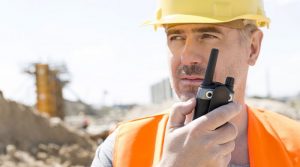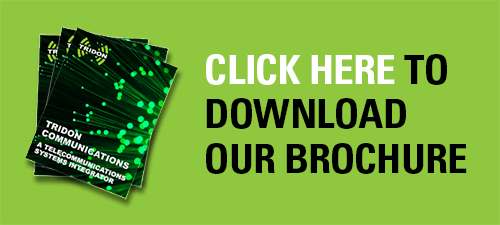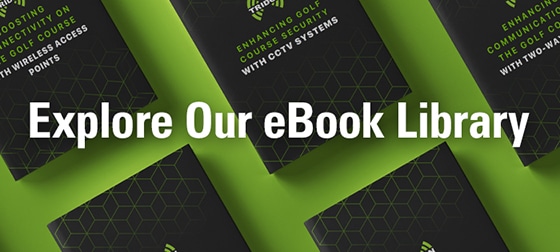
If you’ve used two-way radios on the job, you know that there is a load of terminology that comes with the technology. Some of it may be obvious, while other terms fly right over your head. So, as a bit of a crash course, we ‘ve prepared a list of two-way radio terms that are worth knowing.
If there are any terms missing, or if you have any questions, feel free to Contact Us.
In the meantime, take a look.
AFRRCS |
AFRRCS is the Alberta First Responder Radio Communication System. It was designed to give paramedics, firefighters, police, a public works a private, secure, two-way radio system dedicated to public safety communications. The objective of the network is to provide interoperability between these agencies so they could coordinate their emergency response efforts. |
Ambient Noise |
Ambient noise is essentially background noise. In an industrial setting, like a construction site or an oil refinery, that background noise can make radio communication more difficult. At high enough levels, it can even pose a risk of damage to hearing. |
Analog |
Analog radios send and receive information by means of an electrical signal. Analog two-way radios can transmit voice and data. |
Antenna |
The component of a two-way radio that converts FM signals in the air into electrical current that a radio’s speaker can convey as audio (sound). |
Base Station |
A desk-mounted two-way radio that acts as a hub for the entire communication system. The base station can receive and transmit voice information, and data. They are typically operated by dispatchers. |
Bi-Directional Amplifier |
A bi-directional amplifier, or BDA, is a type of signal booster that supports in-building radio communications. Materials used in modern large-scale construction, like concrete and steel, can interfere with radio signal transmission. Having BDA’s installed helps signals get through these man-made obstructions. |
Channel |
Channels are portions of the RF spectrum that two-way radios use to communicate. Separating frequencies into channels helps keep communication organized. |
Channel Selector |
A two-way radio component that allows users to switch between programmed channels. In trunking systems, this component is referred to as a group or GID selector. |
Coverage Area |
The area supported by a two- way radio system. Venturing outside of this area will leave you out-of-range of radios on the system. A coverage area depends on factors like the power of the radios used, natural terrain, and supporting infrastructure. |
Digital |
Digital radios transmit information via numeric codes, like computers. |
DMR |
DMR stands for Digital Mobile Radio and is a standard for digital voice communication. |
FDMA |
FDMA stands for Frequency Division Multiple Access. It is a method of separating frequencies by channels. When a conversation occurs on that channel, it takes up the entire channel, and others must wait to use it. |
Frequency Band |
The portion of the radio frequency spectrum your two-way radio uses to communicate. |
Gain Control |
Gain Control is a receive-side function. When your microphone is receiving your voice at a low level it can boost the amplitude of your voice before the radio transmits. When a radio is receiving radio signals, it can boost the signals to make demodulation easier. |
Ingress Protection |
This is a measure of how well protected your two-way radios is from dust or water entering the housing. Click here for a full description of Ingress Protection ratings. |
Intrinsically Safe |
A designation assigned to two-way radios that are safe to use in hazardous environments where combustibles are present. Click here for more information on intrinsically safe two-way radios. |
ISED |
ISED (Innovation, Science, and Economic Development Canada) is the federal agency responsible for managing and licensing access to the RF spectrum. |
Land Mobile Radio |
Land Mobile Radio, or LMR, refers to any land-based radio communications system. While the range of radio systems and public sector agencies using LMR is considerable, note that LMR excludes aerial radio systems (used in aircraft) and marine radio systems (used in boats and ships). |
Lone Worker TM |
A safety feature; The Lone Worker feature sends out an alert if an individual, working in isolation, doesn’t report their status at regular time intervals. |
Man Down TM |
A safety feature; The Man Down feature sends out an alert if the radio sits at beyond a certain angle for a predetermined length of time. The working assumption is that the worker has fallen and is incapacitated. |
Mobile Radio |
A two-way radio designed for use in vehicles. |
Multimode/Mixed Mode |
The ability of two-way radios to operate in several different, typically a mix of analog and digital. |
Noise Cancellation |
The process of filtering out background noise for the purposes of hearing protection and/or improved voice communication. Noise cancellation can be either active or passive. |
P25TM |
Short for Project 25; P25 is a digital radio standard meant for public safety communications. |
Portable Radio |
A handheld two-way radio. |
Push to Talk |
Also called ‘the transit button’. A push to talk, or PTT, switch is what two-way radio users press and hold when they want to send a message. |
Radio Stun |
A feature that allows radio system managers to remotely disable a two-way radio that has been lost or stolen. This helps protect the privacy of communications. |
Range |
The distance a two-way radio can transmit and be received and decoded by a receiving radio. The range is generally defined by the boundaries of a coverage area. |
Repeater |
A signal booster that supports two-way radio communications in large facilities and outdoor work sites. Repeaters contain both a transmitter and a receiver. They receive weak signals and re-transmit them at higher power levels. The intended recipient gets the message with minimal audio quality degradation. |
RF |
The abbreviation for ‘radio frequency’. |
Scanning |
A feature that allows two-way radios to monitor pre-selected channels for signals the radio user can then listen to. |
Speaker Mic |
Sometimes called a remote speaker mic or RSM. This is a two-way radio accessory that allows users to transmit and receive messages via a shoulder or dash-mounted microphone. This saves them the trouble of physically handling their radio and allows them to keep both eyes on the job, like driving or performing security patrols. |
Squelch |
Squelch is a control that tells the receiving radio to stop playing audio when signal strength drops below a certain level. If there is a concern of interference from nearby, but unrelated, communications, PL/QT/CTCSS tones can be used to mitigate it. |
Talk Around |
In wide-area systems, repeaters are used to carry communications the added distance. Talk Around is a feature that allows radios to forgo using the repeater if the intended recipient radio is close enough. The benefit is a reduced load (traffic) on the repeater. |
Talk Group |
A group of two-way radios that all hear the same message. On large scale projects with hundreds of radios in use, talk groups can be used so that communications from one team are kept sperate from that of another team. All radios on-site use the same system, but programming keeps their communications separate, even when they happen at the same time. |
TDMA |
This is a method of dividing a radio channel into time slots, and radio users essentially wait in a queue to use a channel that is currently in use by another person. Using TDMA creates more ‘talk paths’ for radio users, allowing for more efficient use of the RF spectrum and cost-savings, as well. |
Trunking |
A technique used in larger radio systems that allows several, sometimes hundreds, of two-way radios to efficiently share the same resources, like repeaters and channels. |
UHF |
Abbreviation for Ultra-High Frequency. In Canada’s LMR industry, this band ranges from 406 to 470 MHz. Radios on this portion of the RF spectrum are well suited to indoor communications because of their penetrating power. |
VHF |
Abbreviation for Very High Frequency. In Canada’s LMR industry, the band ranges from 136 to 174 MHz. This portion of the RF spectrum is well suited to outdoor work environments because of the longer-range capability of the frequency band. |
Tridon is a full solution Telecom Systems Integrator with CSA certification and licensed by APEGA. Our Engineering, Service and Tower Divisions collaborate with customers to build engineered solutions including communications systems design, tower inspections, and co-location, wireless broadband, fiber optic cabling, site security, and two-way radio communication.



